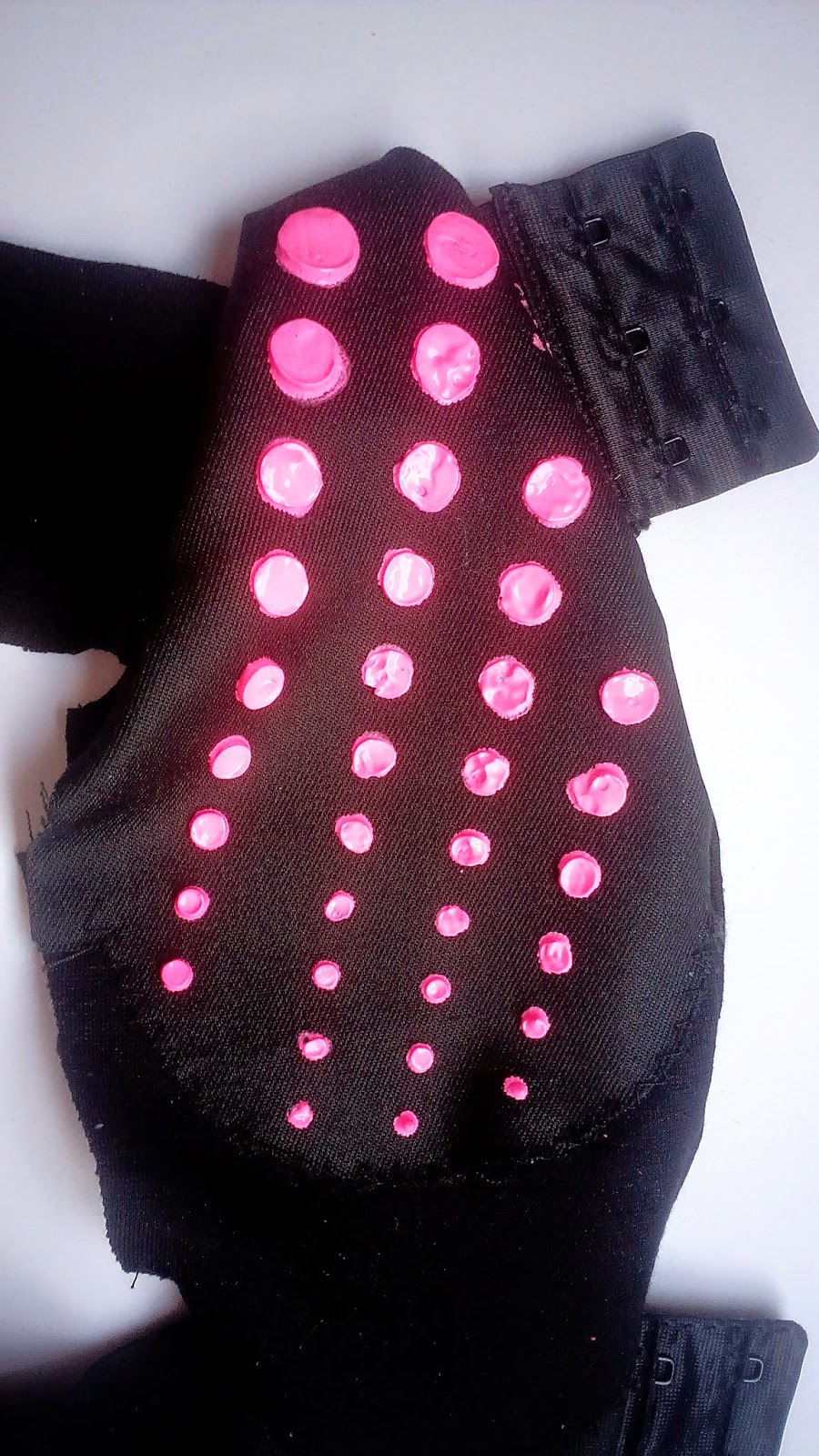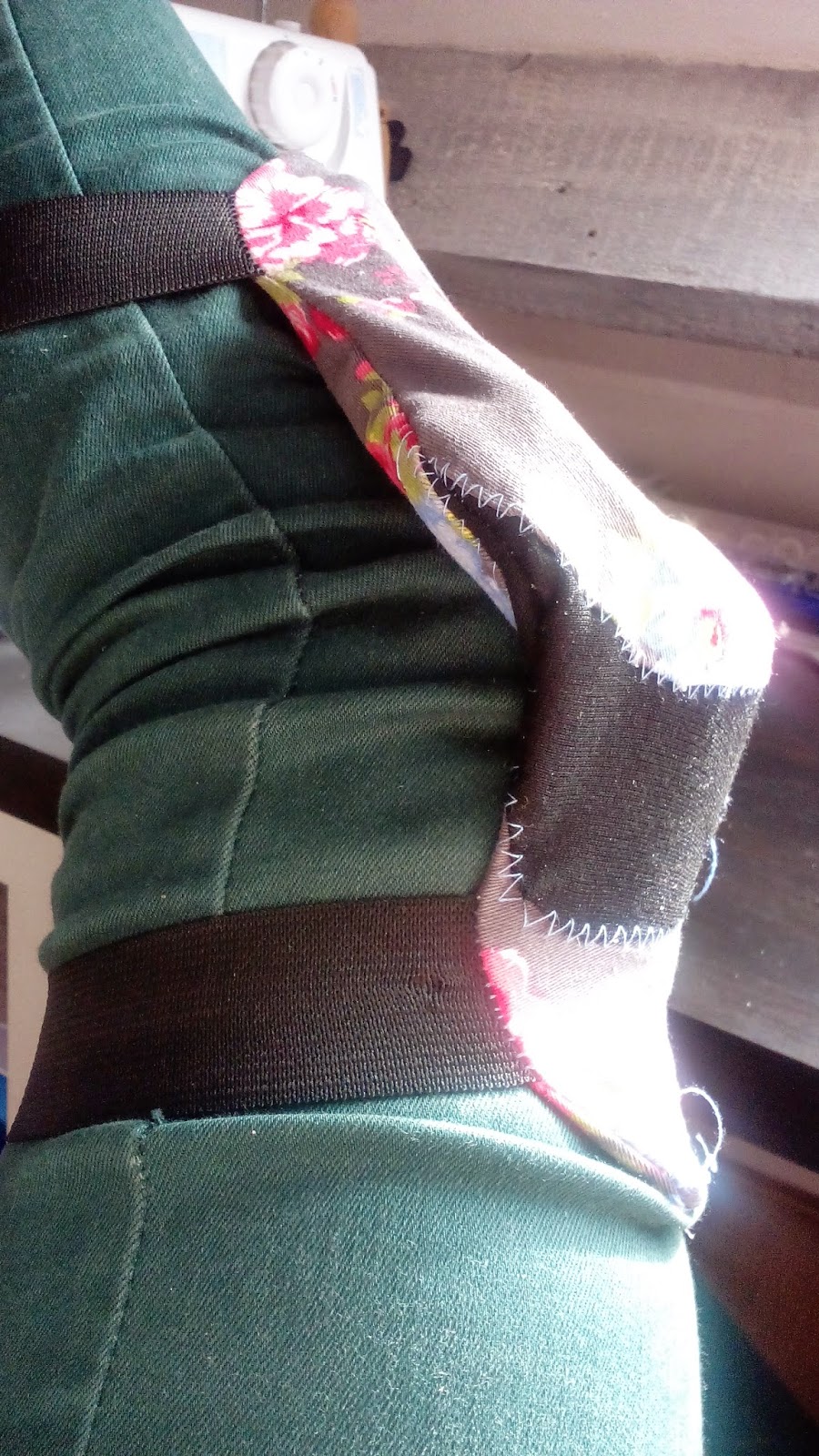48a
This picture
shows how little cuts were made and fold over to then sew them with a sewing machine.
Elements of experience:
Positive expected: easier to fold over
Positive unexpected:
Negative expected:
Negative unexpected: hard to sew, is difficult to not see the cuts that
are made
Time: 10min
48b
When it was
difficult to hold the cut flaps when being sewed, the idea came to first glue
the pieces on the inside so that it is easier to sew.
Because it
stayed in place, it was directly sewed upon the elastic part.
This came
with the problem that there was a gab, because it was sewed to far from the
edge. Of course if it was sewed this way it would always have a little gab
where filth can accumulate.
Elements
of experience:
Positive expected: more beautiful finish
Positive unexpected:
Negative expected:
Negative unexpected: gap between the two fabrics, see picture
Time: 15min
48C
The problem
with 48b was solved when an extra stitching was applied
Elements
of experience:
Positive expected: problem with gap solved
Positive unexpected: a fun
finishing feature
Negative expected:
Negative unexpected:
Time: 2min
48d
After seeing
the fun aspect of sewing with zigzag pattern. It was used to attach the top of
the casing.
Elements
of experience:
Positive expected: no need in using an extra stitching
Positive unexpected: maybe isn’t
needed to bend the fabric in first place because this stitching covers the edge
of the fabric so that it can’t fripper
Negative expected:
Negative unexpected:
Time: 10min
48e
The other
side of the prototype is completely made of the technique used in 48d
Elements
of experience:
Positive expected: faster and easier to make
Positive unexpected:
Negative expected:
Negative unexpected:
Time: 15min















































